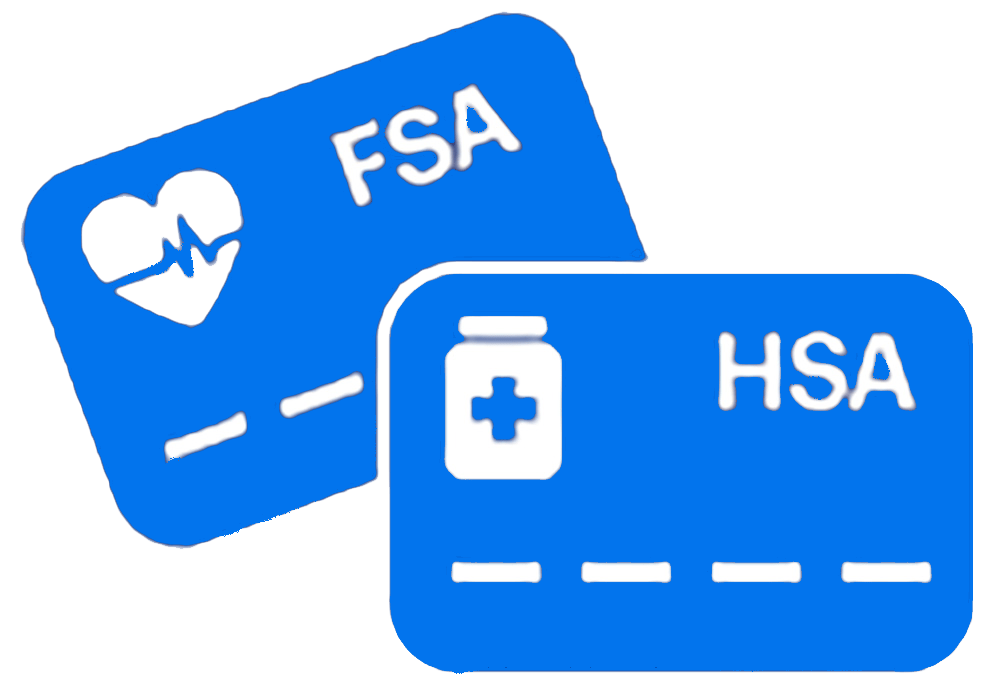It’s time to discover the transformative power of NAD infusions. In this article, we will dive deep into the fascinating world of NAD (Nicotinamide Adenine Dinucleotide) and how it has become a game-changer in Lyme disease recovery. With its ability to boost energy levels, enhance mental clarity, and support overall well-being, NAD infusions have gained immense popularity among Lyme disease patients seeking relief from their symptoms. We will explore the science behind NAD, how it works in the body, and the potential benefits it holds for those battling Lyme disease. Join us on this journey from fatigue to freedom as we uncover the remarkable potential of NAD infusions in reclaiming your life from the clutches of Lyme disease.
Understanding Lyme Disease and its impact on the body
Lyme disease is a tick-borne illness caused by the bacterium Borrelia burgdorferi. It is primarily transmitted to humans through the bite of infected black-legged ticks. The disease often manifests with a variety of symptoms, including fatigue, joint pain, muscle aches, brain fog, and even neurological complications. These symptoms can significantly impact a person’s quality of life, making even the simplest tasks challenging to complete.
The impact of Lyme disease on the body is multifaceted. The bacterium can invade various tissues, including the skin, heart, joints, and nervous system. This invasion triggers an immune response, leading to inflammation and the release of harmful toxins. Over time, these toxins can contribute to the development of chronic symptoms and a persistent state of fatigue. This is where NAD infusions come into play.
NAD, or Nicotinamide Adenine Dinucleotide, is a coenzyme found in every cell of the body. It plays a crucial role in energy metabolism, DNA repair, and cellular signaling. In recent years, researchers have discovered that NAD levels can become depleted in individuals with chronic illnesses, including Lyme disease. This depletion can worsen symptoms, as the body struggles to maintain optimal cellular function. NAD infusions offer a way to replenish these levels and restore balance to the body.
What is NAD and how does it work?
NAD is a molecule that exists in two forms: NAD+ (oxidized) and NADH (reduced). The primary function of NAD+ is to facilitate energy production within the mitochondria, the powerhouses of our cells. It acts as an electron carrier, shuttling electrons between different molecules involved in the production of ATP (adenosine triphosphate), the body’s main source of energy.
NAD+ also plays a vital role in cellular signaling and DNA repair. It serves as a cofactor for various enzymes that regulate gene expression, cell survival, and overall cellular health. When NAD+ levels decline, these essential cellular processes can be compromised, leading to dysfunction and the onset of various health issues.
NAD infusions work by directly delivering NAD+ into the bloodstream. By bypassing the digestive system, which can degrade NAD+ when taken orally, infusions ensure maximum absorption and utilization of this vital coenzyme. Once in the body, NAD+ can readily enter cells and participate in energy production and cellular repair processes. This infusion of NAD+ provides a much-needed boost to the body’s energy levels and overall well-being.
The role of NAD in Lyme Disease recovery
In individuals with Lyme disease, the body’s immune system is often in a state of constant activation due to the persistent presence of the bacterium. This chronic immune response can lead to increased inflammation, oxidative stress, and cellular damage. As a result, NAD+ levels can become depleted, exacerbating fatigue and other symptoms associated with Lyme disease.
NAD infusions offer a unique approach to Lyme disease recovery by replenishing NAD+ levels and supporting cellular function. By directly delivering NAD+ into the bloodstream, infusions bypass the need for the body to synthesize it from precursors, such as niacin or tryptophan. This direct infusion ensures that the body receives an immediate supply of NAD+ to support energy production and cellular repair processes.
Additionally, NAD+ has been shown to have anti-inflammatory and antioxidant properties. It can help reduce inflammation and oxidative stress, two key drivers of Lyme disease symptoms. By mitigating these factors, NAD+ infusions can potentially alleviate symptoms and promote healing within the body.
Benefits of NAD infusions in Lyme Disease treatment
The benefits of NAD infusions in Lyme disease treatment are vast and multifaceted. One of the most noticeable benefits reported by patients is a significant boost in energy levels. Lyme disease often causes chronic fatigue, making it challenging to perform daily activities and enjoy life to the fullest. NAD infusions can help combat this fatigue by supporting optimal energy production within the cells. Patients often report increased stamina, improved mental clarity, and a renewed sense of vitality.
In addition to energy enhancement, NAD infusions have also been shown to improve cognitive function and mental well-being. Brain fog is a common symptom experienced by individuals with Lyme disease, characterized by difficulties with concentration, memory, and clarity of thought. NAD+ plays a vital role in neuronal health and neurotransmitter synthesis, making it essential for optimal brain function. By replenishing NAD+ levels, infusions can help alleviate brain fog and enhance cognitive abilities.
Furthermore, NAD infusions have been reported to support immune function and reduce inflammation. Lyme disease can impair the immune system’s ability to fight off infections and maintain overall health. NAD+ has been shown to regulate immune responses and modulate inflammatory pathways, potentially helping to restore immune balance and alleviate symptoms associated with Lyme disease.
NAD infusions vs. other treatment options for Lyme Disease
While there are various conventional and alternative treatment options available for Lyme disease, NAD infusions offer a unique approach to healing and recovery. Unlike antibiotics, which target the bacterium directly, NAD infusions address the underlying cellular dysfunction and energy depletion associated with Lyme disease.
Antibiotics are the primary treatment for acute Lyme disease cases, as they can effectively kill the bacterium. However, in chronic Lyme disease cases, antibiotics may not be sufficient to address the persistent symptoms and cellular damage. This is where NAD infusions can play a crucial role in supporting overall healing and recovery.
Furthermore, NAD infusions are generally well-tolerated and have minimal side effects compared to long-term antibiotic use. Antibiotics can cause gastrointestinal disturbances, yeast overgrowth, and antibiotic resistance, among other issues. NAD infusions, on the other hand, have been reported to have few side effects, with most patients experiencing increased energy and an overall sense of well-being.
It is important to note that NAD infusions should not replace traditional medical treatment for Lyme disease. They should be used as a complementary therapy alongside other treatment modalities, such as antibiotics or herbal remedies. Consulting with a knowledgeable healthcare professional is essential to develop an individualized treatment plan that addresses the specific needs of each patient.
How to find a reputable NAD infusion provider
Finding a reputable NAD infusion provider is crucial to ensure a safe and effective treatment experience. Here are some tips to help you find the right provider:
- Research and gather information: Start by researching NAD infusion providers in your area. Look for providers who specialize in Lyme disease treatment and have experience administering NAD infusions. Read reviews and testimonials from previous patients to get a sense of their expertise and the quality of care they provide.
- Consult with healthcare professionals: Reach out to your primary care physician, infectious disease specialist, or integrative medicine practitioner for recommendations. They may be familiar with reputable NAD infusion providers in your area or can guide you in finding one.
- Ask questions: Once you have identified potential providers, don’t hesitate to ask questions about their experience, training, and protocols. Inquire about the specific NAD formulation they use, the duration of the infusion sessions, and any potential side effects or risks associated with the treatment.
- Credentials and certifications: Check if the NAD infusion provider and their staff have the necessary credentials and certifications. Look for certifications from reputable organizations such as the American Board of Integrative Medicine or the American Association of Naturopathic Physicians.
- Personal connection: Trust your instincts and ensure you feel comfortable with the provider and their staff. A good provider will take the time to listen to your concerns, explain the treatment process thoroughly, and address any questions you may have.
Remember, NAD infusions are an investment in your health, and finding a reputable provider is essential for a safe and successful treatment experience.
Personal stories and testimonials of Lyme Disease patients who have undergone NAD infusions
Personal stories and testimonials from Lyme disease patients who have undergone NAD infusions can provide valuable insights into the potential benefits and outcomes of this treatment approach. While individual experiences may vary, hearing firsthand accounts can help paint a broader picture of the transformative power of NAD infusions.
Many patients report a significant improvement in their energy levels and a reduction in fatigue after undergoing NAD infusions. They describe feeling more alert, focused, and able to engage in activities they had previously found challenging. Some patients also report improvements in cognitive function, such as enhanced memory and mental clarity.
Testimonials often highlight the positive impact of NAD infusions on overall well-being. Patients describe feeling a renewed sense of vitality, improved mood, and a greater ability to enjoy life. They also note improvements in various symptoms associated with Lyme disease, such as joint pain, muscle aches, and sleep disturbances.
It is important to approach personal stories and testimonials with an open mind, recognizing that each individual’s experience is unique. While NAD infusions may have worked wonders for some, it is essential to consult with a healthcare professional to determine if this treatment approach is suitable for your specific needs.
Potential side effects and risks of NAD infusions in Lyme Disease treatment
Like any medical treatment, NAD infusions carry potential side effects and risks. While these are generally minimal, it is important to be aware of them before undergoing treatment. Some potential side effects reported by patients include temporary flushing or warmth in the face, lightheadedness, and mild nausea. These side effects are usually short-lived and subside on their own.
In rare cases, allergic reactions to the NAD infusion can occur. It is important to inform your healthcare provider of any known allergies or sensitivities before starting treatment. They will monitor you closely during the infusion session to ensure your safety and well-being.
It is also essential to remember that NAD infusions should be administered by a trained healthcare professional in a controlled and sterile environment. Choosing a reputable provider who follows proper protocols and adheres to safety guidelines is crucial to minimize any potential risks.
The cost of NAD infusions and insurance coverage
The cost of NAD infusions can vary depending on various factors, including the geographical location, the provider’s experience, and the specific treatment plan. Generally, NAD infusions can range from a few hundred to several thousand dollars per session. The number of sessions required for optimal results will also impact the overall cost.
It is important to note that NAD infusions for Lyme disease treatment are not typically covered by insurance. Insurance companies often consider NAD infusions as an alternative or experimental therapy, and therefore, do not provide coverage. However, it is always advisable to check with your insurance provider to understand your specific coverage and reimbursement options.
While the cost of NAD infusions may be a consideration, many patients view it as an investment in their health and well-being. The potential benefits and improved quality of life often outweigh the financial aspect for those seeking relief from the debilitating symptoms of Lyme disease.
Conclusion: The future of NAD infusions in Lyme Disease recovery
The transformative power of NAD infusions in Lyme disease recovery is undeniable. By replenishing NAD+ levels and supporting cellular function, infusions offer a unique approach to addressing the underlying causes of Lyme disease symptoms. The benefits reported by patients, including increased energy, improved cognitive function, and overall well-being, highlight the remarkable potential of NAD infusions in reclaiming a life free from the clutches of Lyme disease.
While NAD infusions should not replace traditional medical treatment for Lyme disease, they can be a valuable complementary therapy. Consulting with a knowledgeable healthcare professional is essential to develop an individualized treatment plan that addresses your specific needs.
As research into NAD and its role in cellular health continues to advance, the future of NAD infusions in Lyme disease recovery looks promising. With ongoing studies and advancements in treatment protocols, we can expect further refinement and optimization of NAD infusion therapies. For those seeking relief from the fatigue and restrictions imposed by Lyme disease, NAD infusions offer a ray of hope and the potential for a brighter, more vibrant future. Call us today at 205-352-9141.










